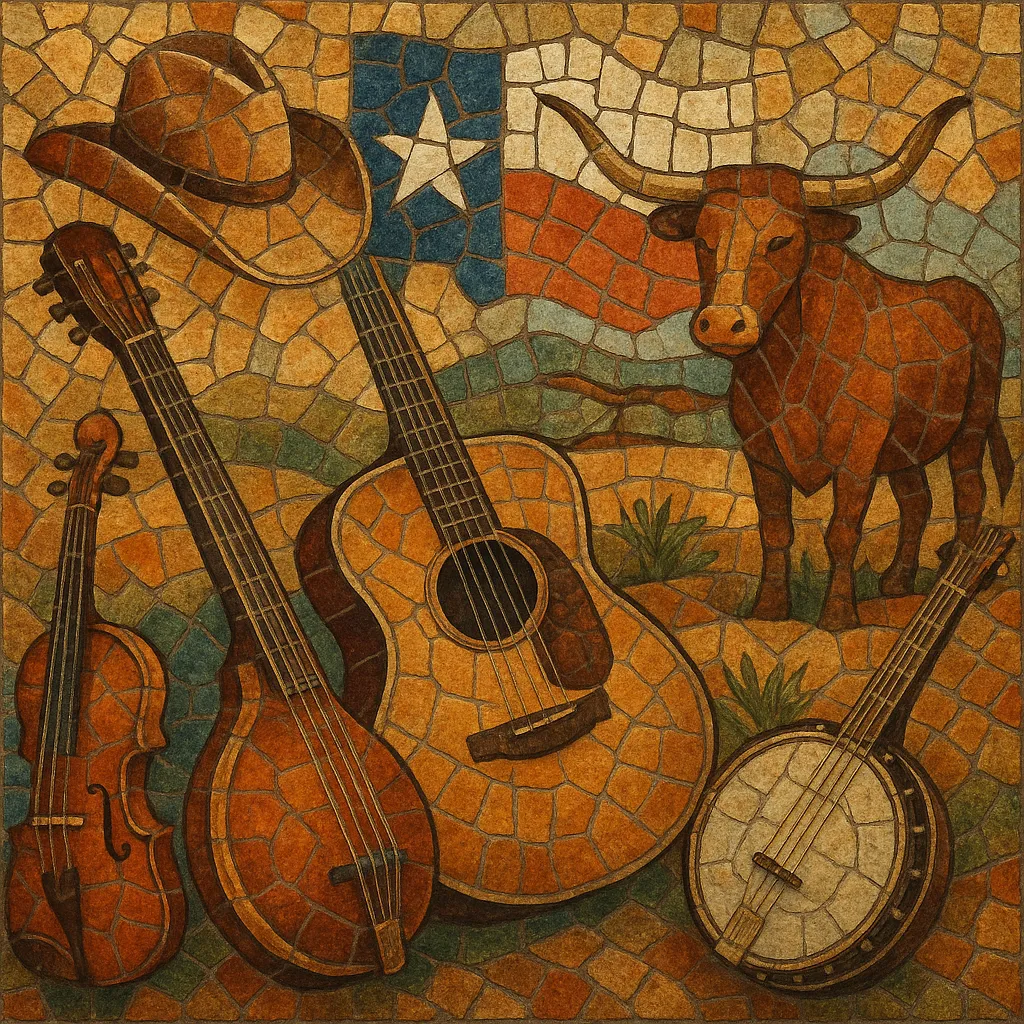
Texas country (often overlapping with the Red Dirt scene) is a roots-oriented strand of country music centered on Texas’ independent venues, college towns, and dancehalls.
It blends classic honky-tonk and western swing with the songwriter-first ethos of outlaw country and the grit of roots rock and southern rock. The style favors live-band energy, two-step–friendly grooves, fiddle and pedal-steel leads, and plainspoken, image-rich storytelling about Texas places, road life, love, and self-reliance.
As a scene, it emphasizes independence from Nashville’s mainstream system: artists commonly build careers through relentless touring, regional radio, and grassroots fan communities rather than chasing pop crossover trends.
Texas country’s DNA reaches back to Texas dancehall culture and radio barn-dance traditions, where western swing (Bob Wills), honky-tonk, and border sounds mingled with the blues. In the 1970s, Austin’s progressive/outlaw country movement (e.g., Willie Nelson and peers) established a songwriter-forward, independent streak that became the philosophical backbone for later Texas country acts.
By the 1990s, a new cohort—gigging across Austin, College Station, Lubbock, and countless small-town venues—coalesced into what fans and local radio would call Texas country. Artists like Robert Earl Keen, Pat Green, and Cory Morrow built audiences via tireless touring and regional airplay rather than mainstream Nashville channels. The emphasis was on unvarnished storytelling, a sturdy live sound, and two-step–friendly beats.
In the 2000s, bands such as Randy Rogers Band, Eli Young Band, Wade Bowen, and Reckless Kelly broadened the scene’s reach, while regional radio networks and college circuits amplified the movement. Some artists crossed into national charts without abandoning the core aesthetic—keeping fiddle and pedal steel prominent and lyrics grounded in everyday Texas life.
Texas country remains a thriving live economy anchored by venues, festivals, and a supportive radio ecosystem. While it overlaps with Red Dirt and Americana, the scene preserves a distinct identity: independent business models, community-first touring, and music that privileges craft songwriting, sturdy grooves, and Texas-specific imagery.

